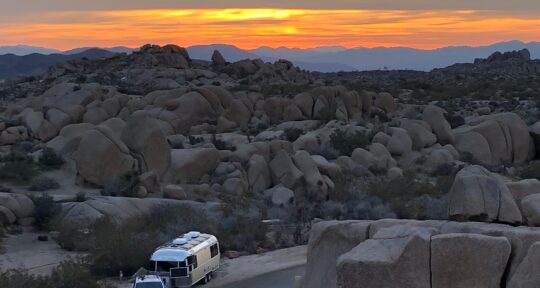Seated among rolling hills and flat farmland along Interstate 5, Brownsville is no ordinary small town. The third oldest settlement in Oregon, Brownsville’s quaint downtown served as a filming location for the 1986 movie Stand by Me. But that’s not what brought me out here. Brownsville is also home to a rock house built with 800 tons of stones, crystals, and petrified wood.
Living Rock Studios, envisioned by Howard B. Taylor, showcases artifacts and original artwork from one of Oregon’s pioneer families. However, it’s the rock house itself that draws visitors to this tiny town. Taylor, his wife Faye, and their three daughters, Nancy, Gail, and Penny, moved to Brownsville in 1952. Taylor worked as a surveyor and rock mason before suffering three strokes and a heart attack in 1964. No longer able to work, he took solace in painting birds. Yet his most celebrated art is what he called the “Living Rock Pictures,” biblical scenes created out of thinly sliced pieces of translucent rock lit from behind.
Taylor’s Living Rock Studios took more than 10 years years to build. With the help of his family and volunteers, it was completed on October 13th, 1985—the Taylors’ 50th wedding anniversary. While the family never lived in the rock house, their home adjoined the studios. After Taylor died in 1996, his daughters took joint ownership of the studios and continued to give tours, sharing their father’s legacy with the public. The studios are still owned and operated by his youngest daughter, Penny Mackey, and her husband David.
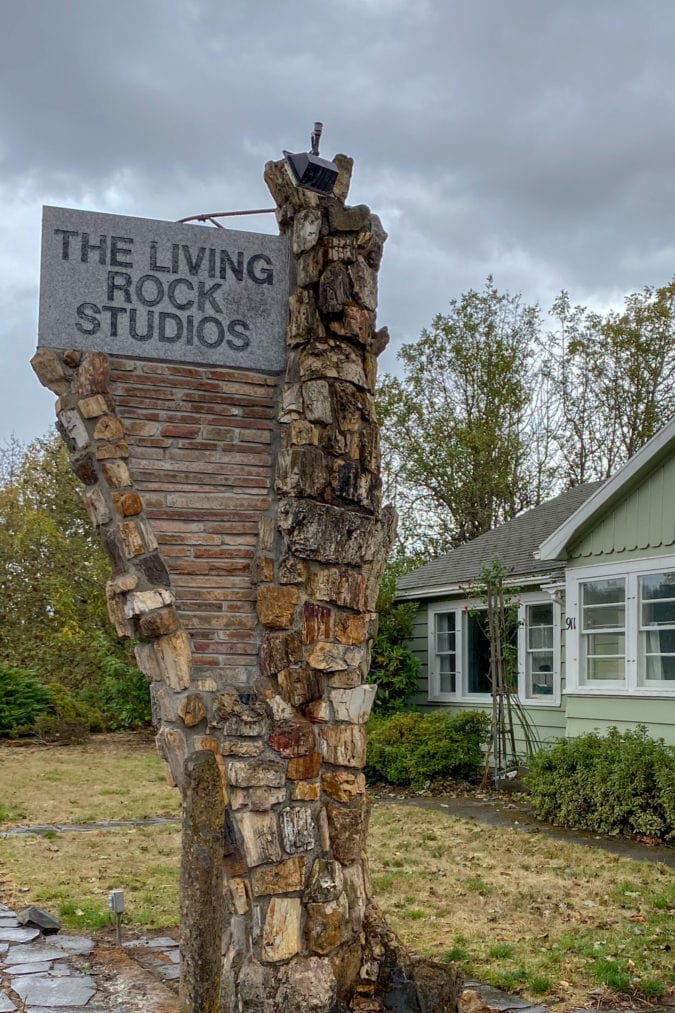
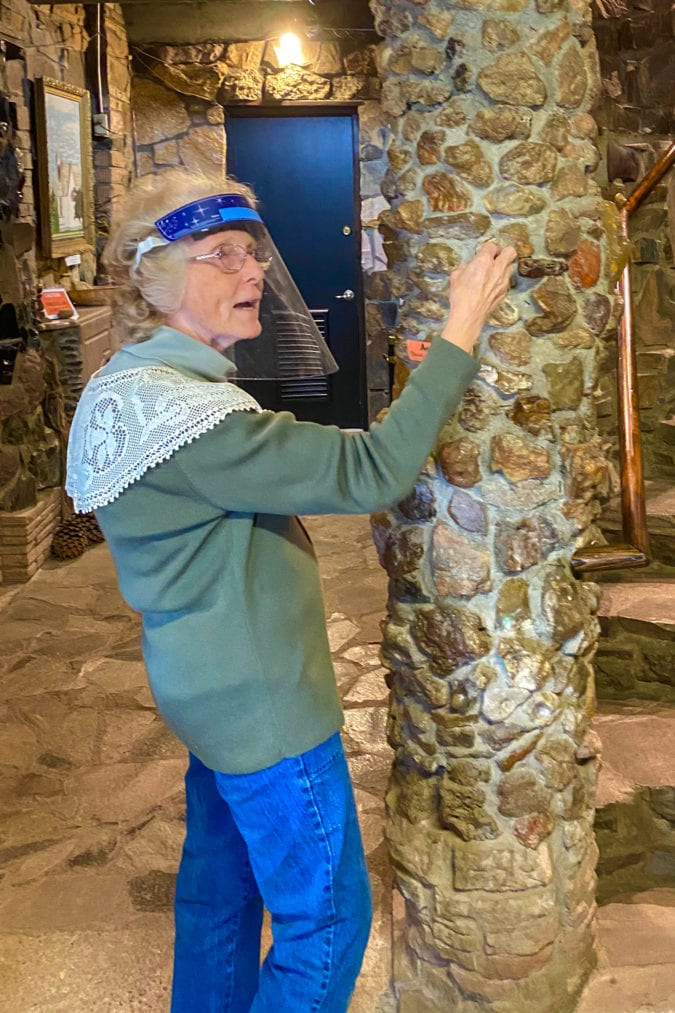
A legacy
It starts to drizzle as I approach Living Rock Studios, which is located just a few miles off Interstate 5. I drive until I see what looks like a mini medieval castle plopped along the road. Penny Mackey welcomes me inside. Upon entering, I marvel at the meticulously constructed stonework, art pieces, and wood carvings. The backyard used to be a nursery, where Mackey says her father built a treehouse in an old oak tree.
“My father saw so many things that were natural—beautiful pieces of rock or wood, or whatever—and he saw those things as just being ignored or discarded,” she says. “And he just couldn’t stand this. So he worked very hard to preserve it. His doctors wanted him to exercise, but he thought, ‘If they want me to lift weights, rocks are weights. I want to have something to show for my lifetime and for people to appreciate for generations to come.’”
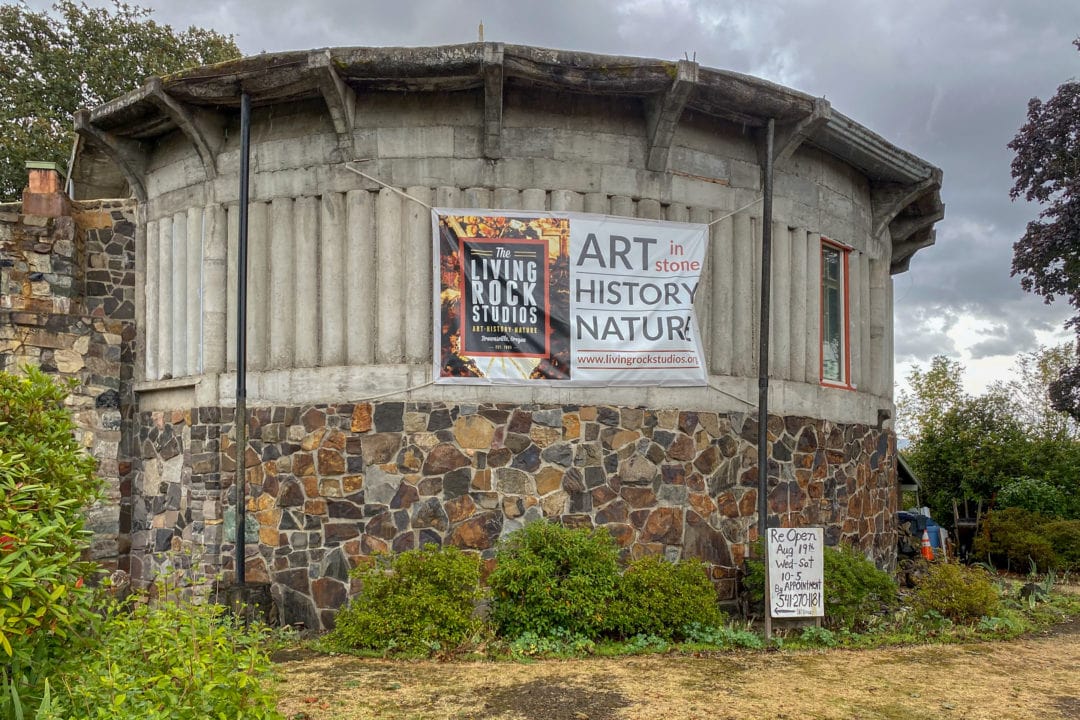
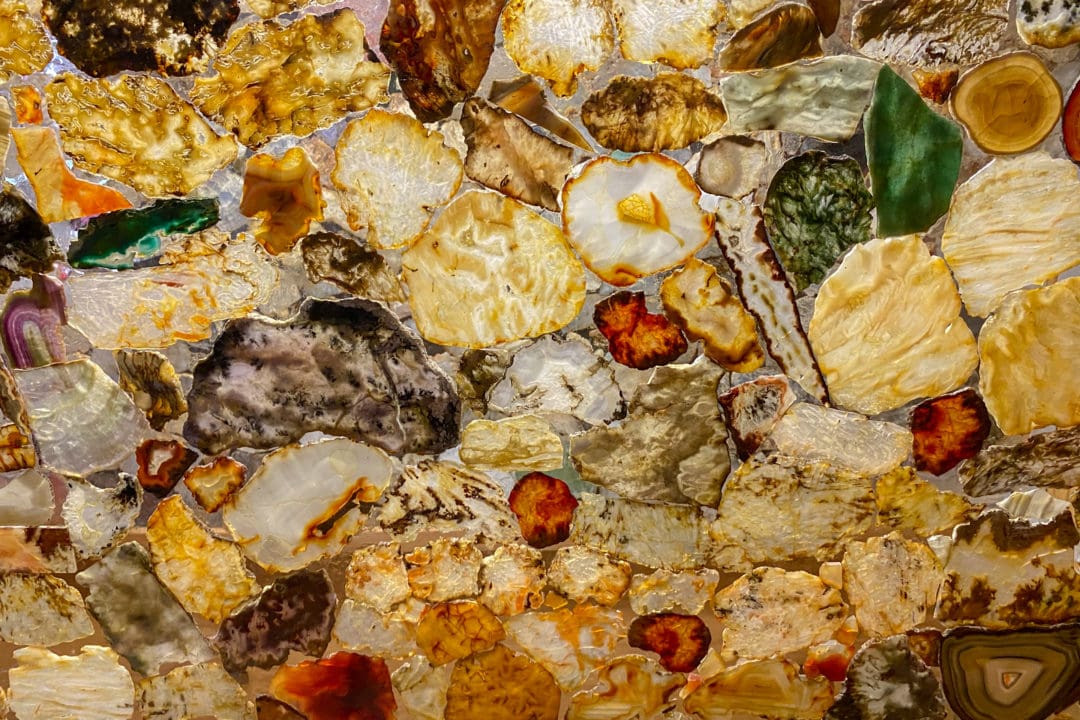
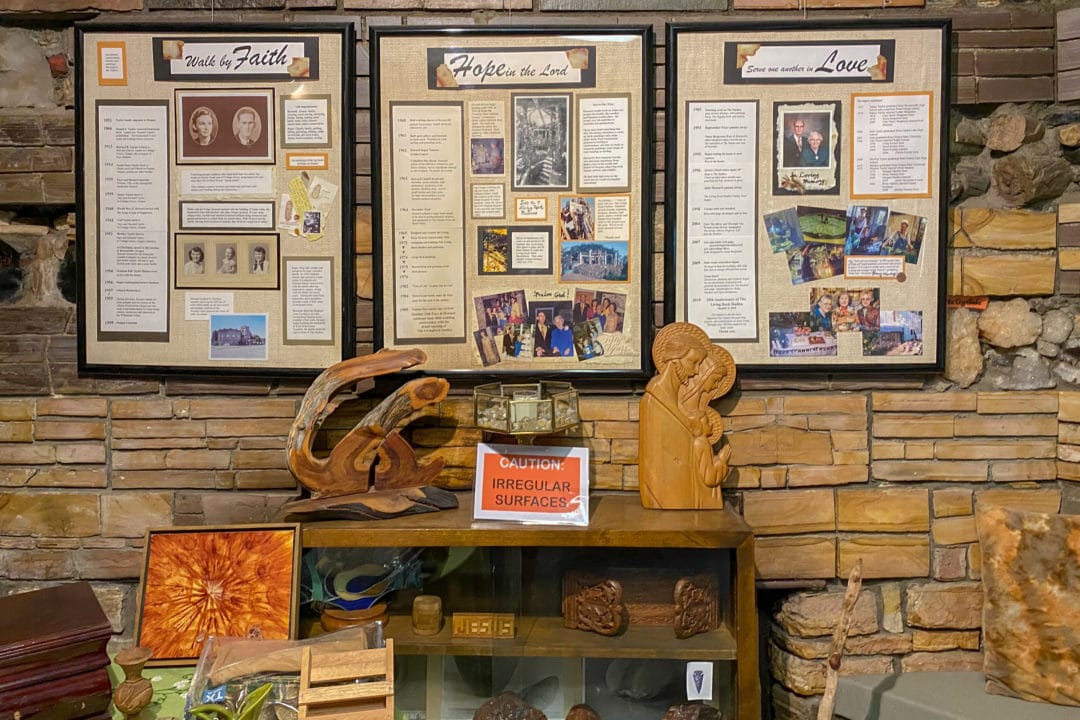
After collecting rocks during his years as a surveyor, Taylor had many specimens at this disposal. His rockhound friends also helped supply many of the stones used to build the rock home. Despite his health challenges, Taylor found a renewed strength and purpose through his work.
“I’m doing this from religious compulsion because I think it’s the right thing to do,” he told Eugene newspaper The Register-Guard.
Living rocks
Living Rock Studios exudes a certain warmth, which is no surprise given the years of dedication and love poured into it by Taylor, his family, and the local community. At the center of the two-story building is a staircase that winds around what Taylor called the “Tree of Life.” Made of petrified wood, the towering tree is the main support structure for the upper floor.
Each and every corner presents a unique feature—from the walls constructed with obsidian, crystals, and thunderegg to the agate pillars that help support the building. Some of the rock specimens even glow when you shine a light on them, so visitors are encouraged to bring their own flashlights.
But the focal point of the collection are the Living Rock Pictures. Taylor toiled away for hours creating biblical scenes out of thinly sliced rocks meticulously pieced together. Backlighting enhances the colors, which resemble stained glass windows.
“This is part of what he would do each day,” Mackey says. “Thousands of hours of work went into each one. We’ve had people here from all over the world, and nobody has ever said they've seen anything like this before.”
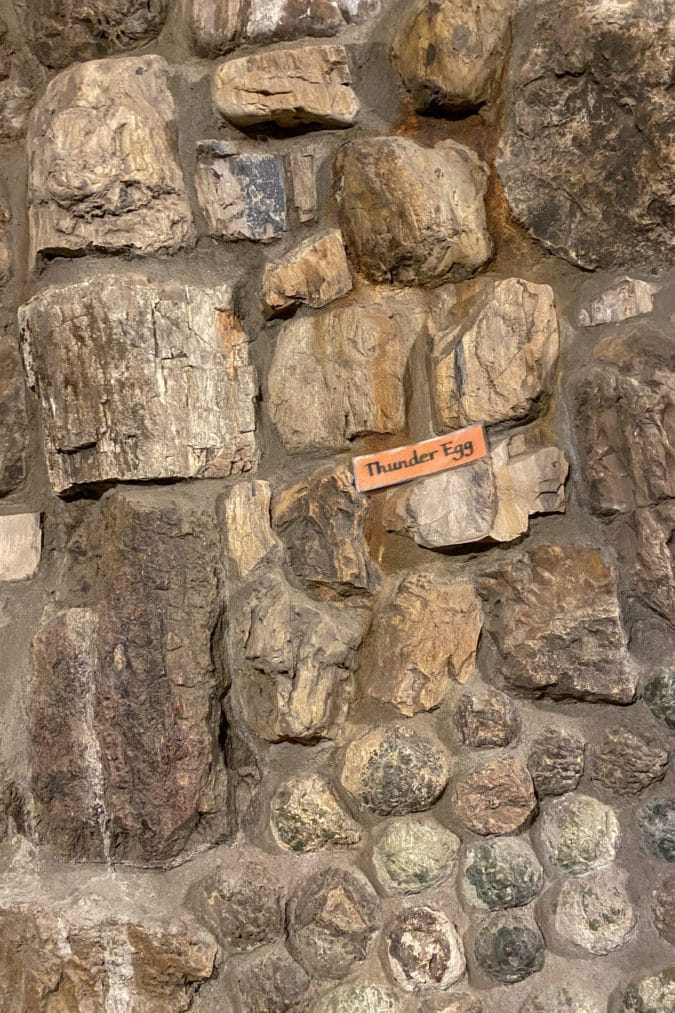
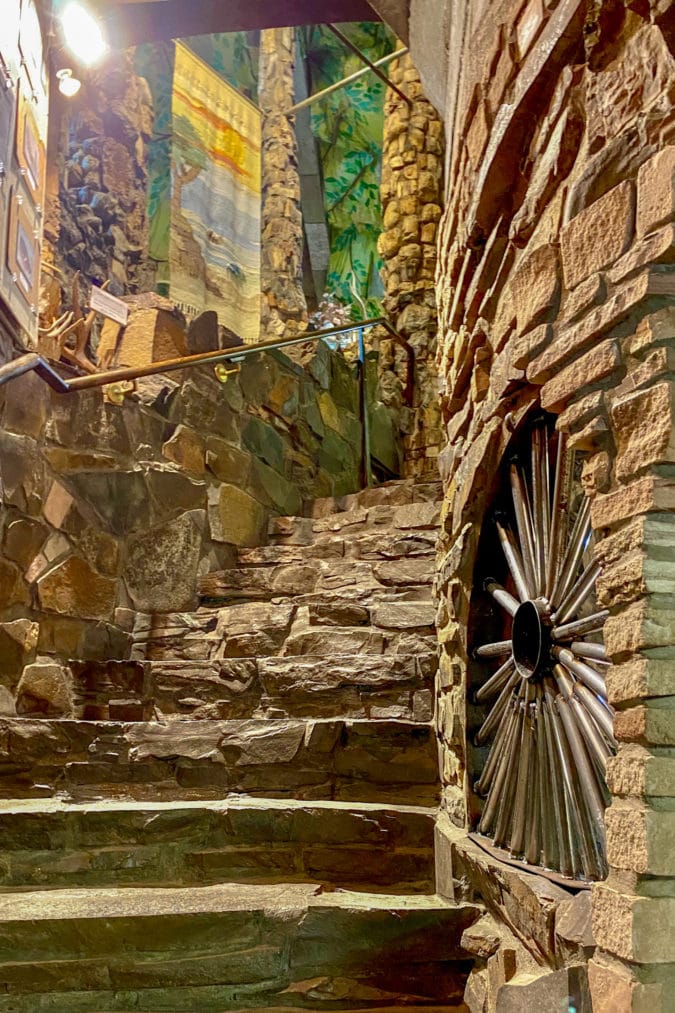
A walk through time
At his core, Taylor was a naturalist. He’d often sit in the woods and observe birds in their natural habitat, which inspired him to paint more than 100 life-size bird portraits, many of which are still hanging up at the studio.
Entering the second floor gallery is like stepping back in time. Countless family antiques are on display, including a vintage organ which the family would play while singing Christmas carols. The Taylors’ ancestors traveled across the country on the Oregon Trail in the 1850s, eventually settling in Oregon. Pioneer memorabilia showcased around the room helps tell the story behind their journey while a large wooden book filled with oil paintings and handwritten descriptions by Taylor showcases Oregon’s logging history.
Before leaving the studios, I visit the rock shop downstairs, which sells various specimens, postcards, and photographs. Living Rock Studios represents not only one man’s dedication to Oregon’s fascinating geology, but an entire family’s living history.
If you go
Living Rock Studios is will be closed until November 28. Due to COVID-19 protocols, tours are by appointment only so call ahead before visiting.






